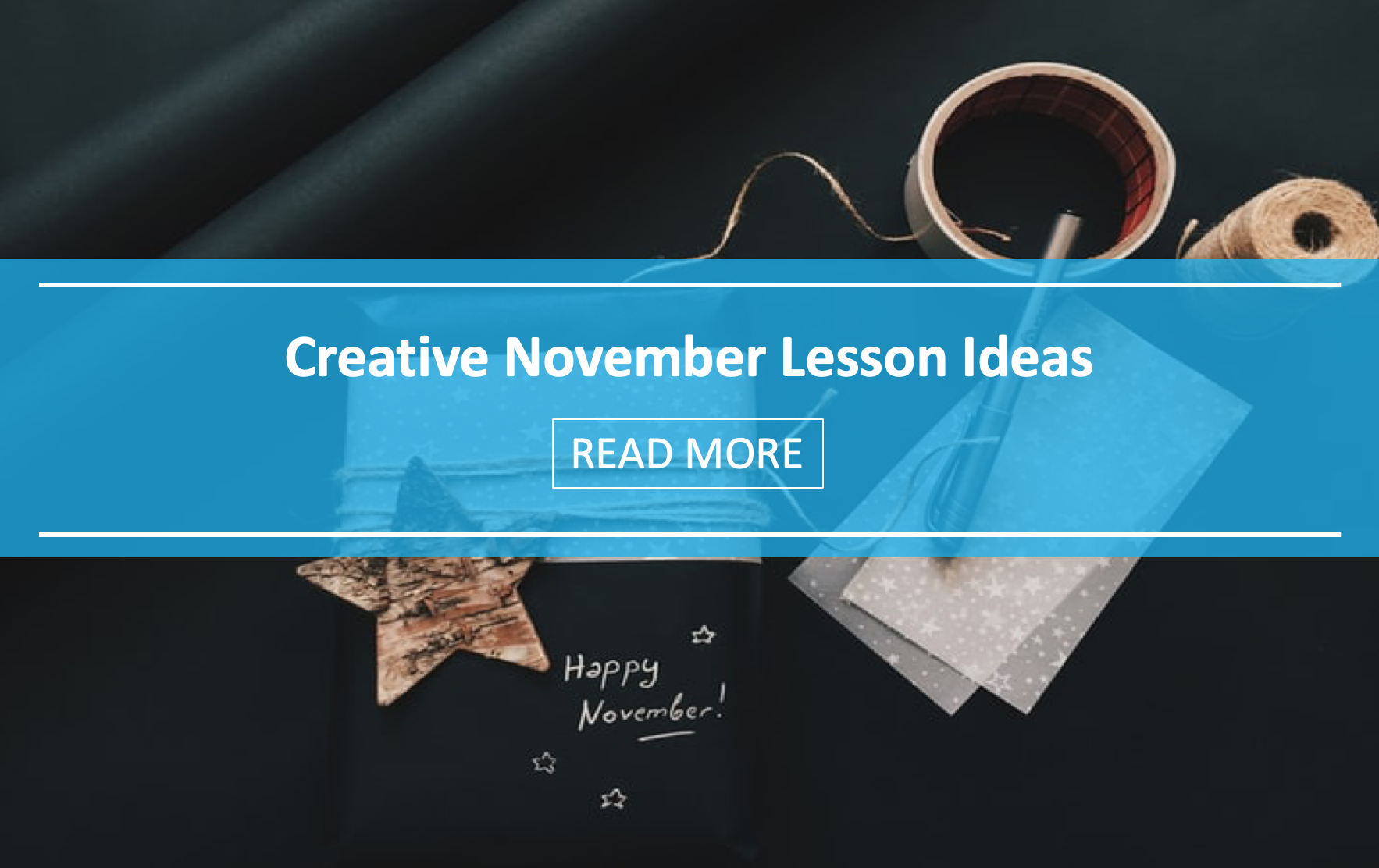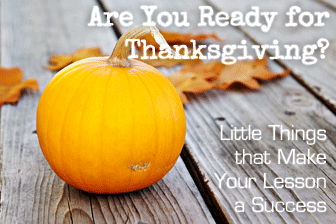Creative November Lesson Ideas


Often this can be a great way to end a class before a break by teaching them a little bit about another culture. Learning language is important, but so is learning about the culture from which it comes. It might be interesting, even, to plan an entire class based around various holidays common in English speaking countries and discuss their origins. This could include the likes of St Patrick’s Day, Easter, Christmas and lesser known ones such as Guy Fawkes Night. Classes focusing on the history, or on different types of celebrations, are often a great way of expanding the students’ knowledge of another culture. If you are teaching in a school with children, it might even be a good idea to have a miniature Thanksgiving dinner. Thanksgiving itself falls on the second Monday of October in Canada, and in the United States it is celebrated on the fourth Thursday of November. If you happen to be teaching in either the US or Canada, giving a little background history to the class might be a great way of helping them integrate into the new culture which they are now living in.
Activities for Children
Telling the story of the Pilgrims on the Mayflower is often a good idea if you have younger students. All children love story time, so take some time out to let them relax and just listen. If one is not familiar with Thanksgiving (as teachers from Australia, South Africa, Ireland and Great Britain may not be), then do a bit of research on it first. You might even want to get the children to draw pictures, and write the story under them (tip: try these great Thanksgiving borders!). Showing them the pictures visually and telling the story will surely be educational and entertaining.
Mini Play
Another great idea might be to throw a miniature play for the class. Of course this is going to depend on time constraints. Along with the students, have them write up a small script for the play and choose the actors. Try and include everyone, making sure that they all have a line. This will usually depend on the size of the class, of course. It can be a lot of fun for the kids, as well. In the classes leading up to the actual play, taking a few minutes near the end to rehearse will also serve to be a great filler.
Again, depending on your time constraints this may or may not be possible. Either way, it is often the same as a glorified role play but the children can still have fun whilst engaging in this activity.
Quiz
This can be for both adults and children. A quiz can be a great way to get the class to compete, hence getting and keeping their attention. The more heated the quiz becomes, and the more involved the students are, the more frequently they will slip into English. Of course, beforehand it might be a good idea to give them a brief overview of what Thanksgiving is. Explaining the story or, better yet, printing off a text about the history of this holiday will help with reading skills, and of course there will always be new vocabulary for the students to learn. After learning the facts, collect the sheets and divide the class up into two groups.
If you happen to be teaching children, then there is nothing like the idea of a reward which will make them that little bit more enthusiastic. Some people are naturally competitive, so there will undoubtedly be many who will happily throw themselves into the game. With regards to children, however, always be sure to play fair and that there is no cheating going on.
They can be altered to suit anything: Halloween, Christmas or even New Year’s. Sometimes students just need to relax and have a bit of light-hearted fun. Inciting a bit of competition will also help them to use their English skills more creatively.